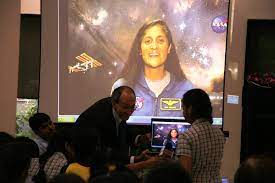Its been a long journey that has taken us many many years, and many Sarabhais, Dhawans, Kalams, Menons, Raos, Madhvans, and countless technicians, to get us to Moon. However, this accomplishment is not solely due to individuals, but also to a culture cultivated over more than 70 years, which cherishes innovation and resource optimization.
There was a time when many amongst us were critical of as to why is Govt spending and devoting its scarce resources towards space program, particularly in 1950s and 70s.
This excerpt from an interesting Book - Growing the Tree of Science, by Indira Chowdhury aptly describes the sentiment then. She wrote ; “At the stone laying ceremony of the Tata Institute of Fundamental Research (in 1954), Nehruji addressed a gathering of scientists and said;
“Lots of people ask me, why such an emphasis is being put on science and why so much money is being spent? The big countries have more power while our country has remained poor….If we wish to empower our country, which is now independent, we have to create a strong base–so we can learn the basics…This may not show immediate results but shall finally result in the uplift of the country.”
Even, many in armed forces often looked at technological development from a different perspective; its utility in warfare and so were sceptical about the lack of focus as the whole attention was towards; communication needs of the country, education and upliftment of masses, rather than on military needs.
Despite doubts and criticisms, post-independence Indian scientists and leaders recognized the potential of science for national development, laying the foundation for a remarkable journey that began from virtually nothing, but which is likely to continue further, as space is limitless and has no boundaries.
Ostensibly in this long Voyage of more than 7 decades, each milestone that we achieved led us to another milestone and so we kept surging ahead.
It would therefore be very unwise on our part if we do not learn as to what all Milestones we achieved and challenges faced along this journey before reaching where we have reached now.
Because unless we know how it all started, we will do great dis service to the visionary people who gave India a solid platform to build the edifice.
xxxxxxxxxxxxxxxxxxxxxxxxxxxxxxxxxxxxxxxxxxxxxxxxxxxxxxxxxxxxxxxxxxxxxxxxxxxxxxxxxxxxxxxxxxxxxxxxxxxxxxxxxxxxxxxxxxxxxxxxxxx
Phase 1 - 1950 to 1970.
Initiating from scratch, with only a handful of renowned scientists like Meghnad Sah, Shanti Swaroop Bhatnagar, Homi Jehangir Bhabha, and Vikram Sarabhai, these visionaries were granted the freedom to create the scientific and technological groundwork for the future.
The space journey under Dr. Vikram Sarabhai's leadership started with the establishment of institutions like ARIES and the Rangpur Observatory.
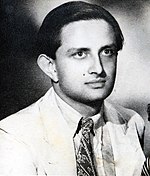
The Indian space programme envisioned three distinct elements ; satellites for communication, the space transportation system and application programmes and Remote sensing.
Thus to achieve the above we needed following;
An Organisation, Which could laydown the policy guidelines, provide vision and direction and enable us to use the satellites effectively and efficiently for Nation building.
Design and build remote sensing satellites and communication satellites.
Design and build the launch vehicles which can put these satellites into the orbits.
The Indian space program evolved through the Indian National Committee for Space Research (INCOSPAR) in 1962 under Dr Sarabhai, later maturing into the Indian Space Research Organisation (ISRO) in 1969. Alongside this growth, various establishments including the Department of Atomic Energy, the Bhabha Atomic Research Centre, the Physical Research Laboratory, Council of Scientific and Industrial Research (CSIR), IITs, were set up. In addition Under the stewardship of Shanti Swaroop Bhatnagar, the National Chemical Laboratory, the National Physical Laboratory, the Fuel Research Station, the Glass & Ceramics Research Institute and the National Metallurgical Laboratory and more were established, fostering a scientific environment and supporting the space research.
The space research got a big boost in 1972 when the Govt set up a Deptt of Space in 1972. ISRO was brought under Dept of Space.
As regards launch/ Delivery systems, In 1962, Equatorial Rocket Launching Station (TERLS) located at Thumba near Thiruvanathapuram was created.
On November 21, 1963, the first sounding rocket ( for assessing the physical parameters of the upper atmosphere) was launched from Thumba ERLS.
However, India’s first indigenous sounding rocket, RH-75, was launched , FOUR Years later, on November 20, 1967.
The Satellite Telecommunication Earth Station was set up at Ahmedabad on January 1, 1967.
So the first phase was a learning phase in which we set up - laboratories, set up launch stations, trained manpower through R & D tasks and through institutions that took up initial development activities related to space research and rockets.
xxxxxxxxxxxxxxxxxxxxxxxxxxxxxxxxxxxxxxxxxxxxxxxxxxxxxxxxxxxxxxxxxxxxxxxxxxxxxxxxxxxxxxxxxxxxxxxxxxxxxxxxxxxxxxxxxxxxxxxxxxxx
Phase 2. From 1970s to 1980s.
This phase marked India's first satellite launches, beginning with Aryabhata in 1975, which was launched by the help of Russians as we did not have the Launch Vehicle.
On July 18, 1980 India launched its first indigenously designed 'Rohini' satellite, aboard the ISRO designed Satellite Launch Vehicle-3 (SLV-3E2) in a low earth orbit. Driven by dedication and innovation, the team, led by Dr. APJ Abdul Kalam, achieved indigenous satellite launches like Bhaskara I and II.
The Satellite Instructional Television Experiment (SITE) in collaboration with NASA demonstrated satellite broadcasting for educational purposes. SITE Was hailed as ‘the largest sociological experiment in the world’ that covered 2400 villages of six states and transmitted development oriented programmes using the American Technology Satellite (ATS-6).
xxxxxxxxxxxxxxxxxxxxxxxxxxxxxxxxxxxxxxxxxxxxxxxxxxxxxxxxxxxxxxxxxxxxxxxxxxxxxxxxxxxxxxxxxxxxxxxxxxxxxxxxxxxxx
Phase3 – 1980 to 2000.
The experience gained in phase 2 was put to use in designing and building long range Rockets/ delivery systems and bigger satellites for multiple functions.
In this Phase we moved on to developing long range launch vehicles which could launch heavier Satellites into Geo Synchronous orbits(approx. 36000kms) for communication and TV purposes and place remote sensing satellites in Sun synchronous orbits(approx. 900kms).
Ariane Passenger Payload Experiment (APPLE), an experimental geo-stationary communication satellite was successfully launched on June 19, 1981. It became the forerunner for future communication satellite system.
On March 24, 1987, from SLV we moved on to Augmented Satellite Launch Vehicle (ASLV) that could carry a payload of 150 kg in a 400 km orbit.. It used solid propellants for four stages and two strap ons. The ASLVs were used to place SROSS series Satellites weighing 100 Kgs.
The first operational Indian Remote Sensing Satellite, IRS-1A was launched on March 17, 1988.
Polar Satellite Launch Vehicle(PSLV)
Then we developed the Polar Satellite launch vehicles (PSLVs). They were designed to place heavier satellites weighing 1000 kgs in a 900 km sun synchronous orbit for remote sensing purposes.
PSLV is also a Four stage rocket having liquid and solid propellant engines at different stages. It has a lift weight of 275 tonnes.
In 1994 The PSLVs were successfully upgraded and it could place satellites in Sun synchronous orbits . The Second developmental launch of Polar Satellite Launch Vehicle (PSLV) with IRS-P2, on board took place on October 15, 1994. Satellite was successfully placed in Polar Sun synchronous Orbit.
GSLV (Geo Synchronous Lauch Vehicle)
However to place Heavier satellites for communication and TV broadcasting purposes, in higher Geo synchronous orbits at an altitude of approx. 36000 kms, we needed Launch Vehicles powered with additional thrust ; the cryogenic engines having Liquid Oxygen and Liquid Hydrogen.
The GSLV (Geo Synchronous Lauch Vehicle) project suffered a setback in 1992 as the Russians backed out from the deal to supply the Cryogenic engine. As per the MTCR (Missile technology control regime) export-import of Dual use tech was banned. So under duress of US which felt that cryogenic engine could be used in Long range strategic missiles by India, Russians could not provide us the Cryogenic engine.
As a result, in 1994, Indian scientists had to start a project for the designing of a Cryogenic engine and there was a fresh agreement with Russians in which there was no provision of technology transfer.
xxxxxxxxxxxxxxxxxxxxxxxxxxxxxxxxxxxxxxxxxxxxxxxxxxxxxxxxxxxxxxxxxxxxxxxxxxxxxxxxxxxxxxxxxxxxxxxxxxxxxxxxxxxxxxxxxxxxx
Phase 4 – 2000 Onwards.
By the beginning of 21st century, the ISRO had developed sufficient expertise on building PSLV which became its work horse.
PSLV as a result became a favoured carrier for satellites from various countries due to its reliability and cost efficiency, promoting unprecedented international collaboration.
On October 22, 2008. PSLV-C11 successfully launched CHANDRAYAAN-1 from Sriharikota which was the first Indian planetary science and exploration mission.
On November 5, 2013 - PSLV - C25 successfully launched Mars Orbiter Mission (Mangalyaan) Spacecraft from Sriharikota.
On February 15, 2017, PSLV-C37, the 39th mission of the workhorse launch vehicle of ISRO, injected ISRO’s Cartosat-2 Series Satellite weighing 714 kg and two ISRO Nano-satellites namely INS-1A (8.4 kg) & INS-1B (9.7 kg) and 101 Nano-satellites, from six foreign countries into a Sun-Synchronous Orbit (SSO). The total weight of all the 104 satellites carried on-board PSLV-C37 was 1378 kg.
As regards , GSLV, The first developmental launch with GSAT-1 on board took off from Sriharikota on April 18, 2001, however it was a failure.
During the initial years from the initial launch to 2014 the GSLV had a checkered history with only 2 successful launches out of 7.
Finally, on September 2, 2007, INSAT-4CR weighing 2130 kg was launched by GSLV-F04, which is the heaviest satellite launched from India.
And thereafter, on July 22, 2019, ISRO achieved the milestone, when Geosynchronous Satellite Launch Vehicle, GSLV MkIII rocket (Indigenously designed and built), carried Chandrayaan-2 spacecraft from the Satish Dhawan Space Centre, Sriharikota in Andhra Pradesh. Chandrayaan-2 was India's second mission to the moon.
Thus armed with these launch vehicles that could be designed and built in India ; ASLV, PSLV and GSLV we could now launch a series of satellites.
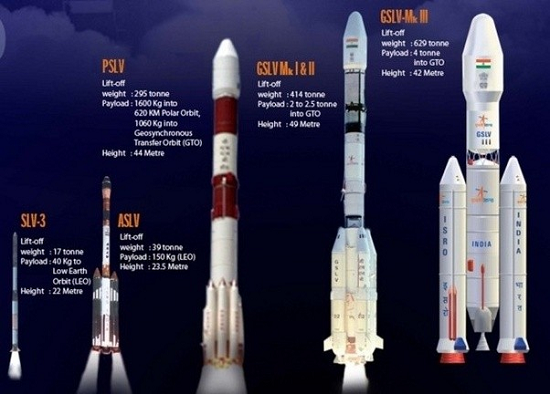
INSAT series (INSAT-1A, 1B, 1C and 1D, INSAT-2A, 2B, 2C, and 2D); were for Long range communication and TV programmes distribution, direct broadcasting to augmented TV Viewers.
The INSAT series launched in the early 1980s, was one of the largest domestic communication satellite systems operating in the Asia Pacific region. The INSAT series brought about revolutionary changes in India’s communication sector. The series, consisted of multipurpose satellites, offering services in the area of television broadcasting, weather forecasting, disaster warning, and search and rescue missions.
IRS series for remote sensing (1A, 1B,1E, P2, 1C, P3, and 1D); were the back bone of natural resource management in the country.
The first operational Indian Remote Sensing Satellite, IRS-1A was launched on March 17, 1988.
India now has the largest constellation of Remote Sensing Satellites, providing services to both national and global customers. Indian Remote Sensing (IRS) Satellites provide a range of spatial resolutions and the state-of-the-art cameras of the IRS spacecraft are reported to provide pictures of the Earth in different spectral bands.
Now we were prepared to serve the Military needs also and the experience gained from designing PSLVs and GSLVs was now being used to develop Long Range missile systems ; Prithvi, Agni etc.
We had everything now; the Scientists, the technicians, the launch stations, the launch vehicles, the command structure, the institutions etc that we needed and developed in these seven decades to achieve what we have achieved.
So now we were ready for the bigger accomplishments and could think big .
In this phase with the PSLV which is the work horse of ISRO and is cost effective, we placed numerous satellites both domestic as well as foreign satellites in the orbit in sun synchronous, as well as, geo synchronous orbits using GSLVs .
Finally, on 14 July 2023, aboard an LVM3 -M4 rocket Chandrayaan-3 was launched from Satish Dhawan Space Center at Sriharikota.
LVM 3-M4 launcher is a three stage GSLV (Geo Synchoronous Launch Vehicle) having a Cryogenic Engine, developed by ISRO after a painstaking effort and series of setbacks, that is now being used to place heavy satellites in geo synchronous orbits.
In addition to all this Indian Regional Navigation Satellite System (IRNSS) has been developed as an independent regional navigation satellite system. It is designed to provide accurate position information service to users in India as well as the region extending up to 1500 km from its boundary.
xxxxxxxxxxxxxxxxxxxxxxxxxxxxxxxxxxxxxxxxxxxxxxxxxxxxxxxxxxxxxxxxxxxxxxxxxxxxxxxxxxxxxxxxxxxxxxxxxxxxxxxxxxxxxxxxxxxxxxxxxx
Conclusion.
All these milestones that have been achieved, over the years, systematically and sequentially could not have been jumped, particularly when we neither resorted to stealing technology nor there was anyone who could sell us the technology nor we had the big money. We did it ourselves Brick by Brick and STEP by STEP. It is interesting to watch it now ;
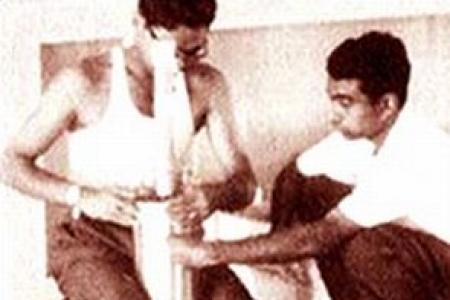
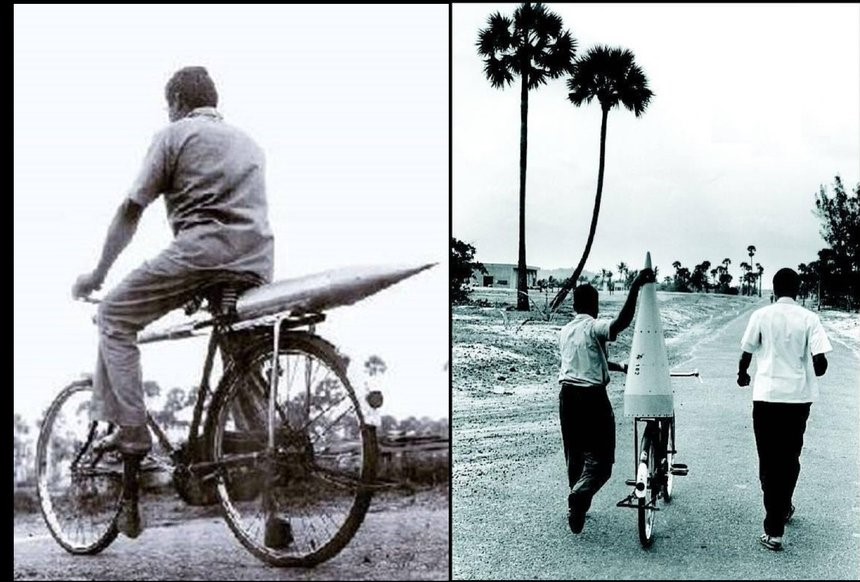
This has compelled the world to take a note of our prowess in the field of Science and Technology, particularly exploration of space.
The zeal with which ISRO has worked over the years was very aptly described by Dr Mahadevan Nair( Erstwhile Chairman of ISRO) in his Book - Rocketing through Skies ; An eventful life at ISRO.
He mentioned in his book an incident which in nutshell gives us an indication the zeal with which ISRO scientists have worked over the years ; An Attitude , we all Indians must inculcate.
“Mahadevan ! what evidence are you going to show to the world that we have reached moon? Asked Dr Kalam prior to the launch of Chandrayan I. “When we carried out our missions in Antartica and Everest we placed our flag, don’t you think we should do something”. Dr Kalam said, who was then the president prior to the launch of Chandrayan I.
“This compelled the scientists to think about it as to what can be done to show to the world that we have reached moon. So, came the idea of MIP(Moon Impact Probe) which could be carried on board Chandrayan – I. Although Dr Kalam’s request seemed to be simple, however the actual task of accommodating it was not easy. Some conservatives said that it was impossible to accommodate such a scheme at such a late stage within the tight budget and schedule constraints. But ultimately some young scientists took the lead. The MIP, with the National flag inscribed on it was fitted with three instruments – a mass spectrometer, a camera, and an altimeter. The idea was to drop the MIP near the lunar South pole right at the time when spacecraft would be at the intended location through a command sent from ISRO’s command centre on earth which then computers on board would follow and drop the MIP. On 14 Nov 2008 when MIP was to be dropped on Moon’s surface. Precisely at 8.06 PM the command was given to the onboard computers to drop the MIP and as we all were watching anxiously the descend of the payload , the MIP impacted at the spot near the lunar south pole. Kalam excitedly said ; you have done it buddy and called that impact point as JAWAHAR STHAL as he felt that ISRO was the vision of Jawaharlal Nehru".
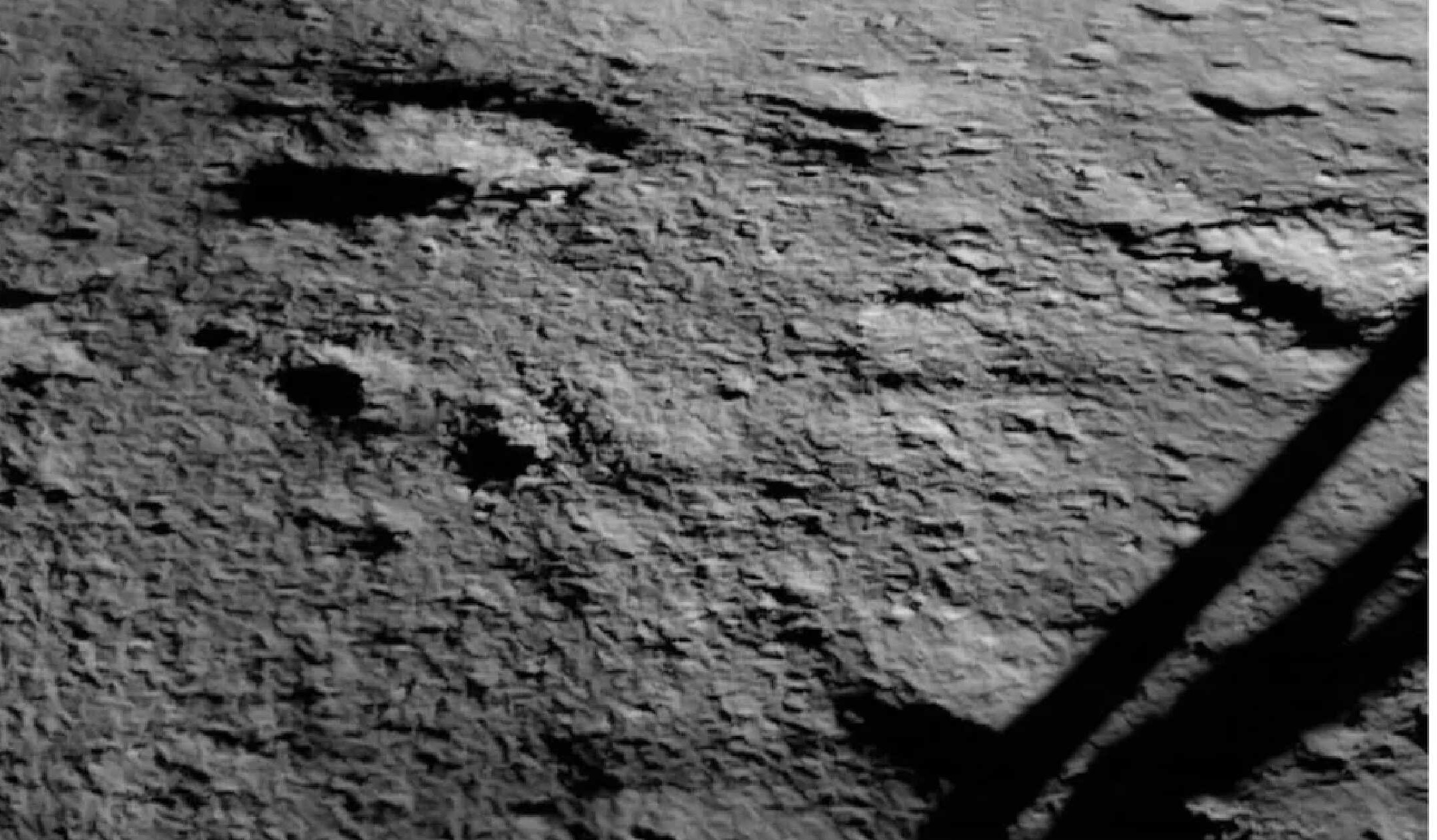
Add a comment


